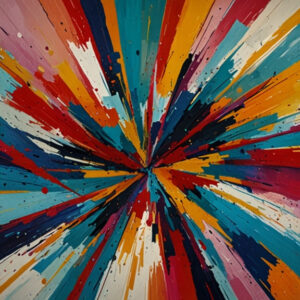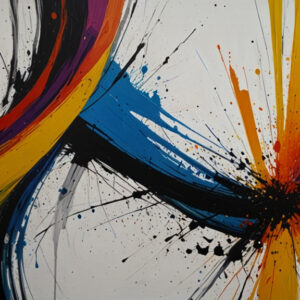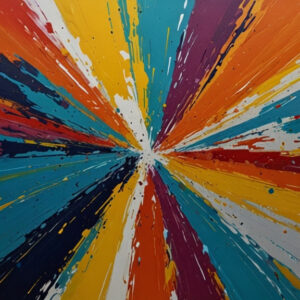Description
In this article, we will explore the concept of customized 3D model art creation for restaurants, the technology behind it, the diverse range of applications, and why it’s fast becoming a must-have service for modern eateries. Additionally, we will look at how this trend is reshaping restaurant marketing, operations, and design, while also providing practical steps for restaurant owners to incorporate 3D art models into their business strategy.
The Rise of 3D Model Art in the Restaurant Industry
The last decade has witnessed a technological revolution that has transformed the way businesses operate, and the restaurant industry is no exception. From online reservations to digital menus and contactless payments, technology is increasingly embedded in the dining experience. However, the advent of 3D modeling is perhaps one of the most exciting developments, offering a way to blend technology with art and design, ultimately creating more immersive and engaging experiences for customers.
3D modeling is the process of creating three-dimensional representations of objects using specialized software. These models can range from simple geometric shapes to highly detailed and realistic depictions of objects, environments, or characters. With the increasing accessibility of 3D modeling software and tools, businesses have begun to harness this technology to enhance various aspects of their operations.
For restaurants, 3D model art provides a way to visualize and communicate ideas in a way that was previously impossible. Whether for designing a new space, showcasing menu items, or creating marketing materials, the use of customized 3D models allows restaurants to innovate, while also providing practical solutions for common industry challenges.
What is a Customized 3D Model Art Creation Service?
A customized 3D model art creation service for restaurants is a specialized offering where professional artists and 3D modelers collaborate with restaurant owners to create bespoke 3D models that align with the restaurant’s branding, design concept, and unique offerings. These models can be used for a wide range of applications, including interior design, menu presentation, marketing campaigns, and customer engagement.
The customization aspect is key. Unlike generic 3D models that can be purchased online, customized models are tailor-made to reflect the specific identity and style of the restaurant. This ensures that every model is unique, and fits seamlessly into the restaurant’s overall concept, whether that concept is sleek and modern, rustic and cozy, or playful and whimsical.
Key Components of a Customized 3D Model Service:
- Consultation and Concept Development: The process begins with an in-depth consultation between the restaurant owner and the 3D artist or design team. During this phase, the artist gathers information about the restaurant’s brand identity, target audience, menu, and design preferences. The goal is to fully understand the restaurant’s vision in order to create models that accurately reflect its essence.
- 3D Model Creation: Once the concept is finalized, the artist uses specialized 3D modeling software to create a digital representation of the object or scene. This can include anything from architectural elements like furniture and fixtures to more abstract concepts like the restaurant’s logo or even virtual representations of signature dishes.
- Texturing and Rendering: After the basic model is created, texturing and rendering are applied to give the model its final appearance. Texturing involves adding surface details, colors, and patterns, while rendering creates realistic lighting effects, shadows, and reflections.
- Revisions and Feedback: Throughout the process, the restaurant owner can provide feedback and request revisions to ensure the final product meets their expectations. This iterative process allows for fine-tuning of details, so the end result is a true reflection of the restaurant’s unique identity.
- Final Delivery and Integration: Once the model is complete, it is delivered to the restaurant in a format that can be easily integrated into various applications, such as website design, social media marketing, or in-house digital displays.
Applications of Customized 3D Models in Restaurants
The potential applications for customized 3D models in restaurants are vast and varied. Here are some of the most common ways restaurants can leverage this technology:
1. Interior Design and Visualization
One of the most obvious applications of 3D model art in restaurants is in the realm of interior design. Before committing to expensive renovations or new furniture purchases, restaurant owners can use 3D models to visualize different design concepts and layouts. This allows them to experiment with various styles, color schemes, and furniture arrangements without the need for physical prototypes.
For example, a restaurant planning to open a new location could use 3D models to create a virtual tour of the space, allowing stakeholders to walk through the design and make adjustments before construction begins. This not only saves time and money, but also ensures that the final result is aligned with the restaurant’s vision.
2. Virtual Menus and Food Presentation
In a world where Instagram-worthy food presentation is essential for marketing, 3D models offer an innovative way to showcase menu items. Rather than relying on static photos or generic stock images, restaurants can create detailed 3D models of their signature dishes. These models can be rotated, zoomed in on, and even animated to show how the dish is prepared or plated.
This application is particularly valuable for online ordering platforms, where customers often make decisions based on visual appeal. A dynamic 3D representation of a dish can entice customers to try something new, or reinforce the perception that the restaurant takes pride in its culinary presentation.
3. Branding and Logo Design
A restaurant’s brand is one of its most important assets, and 3D model art can help bring that brand to life in a visually striking way. Customized 3D logos or mascots can be created to represent the restaurant’s ethos, and these models can be integrated into various marketing materials, both online and offline.
For example, a trendy sushi restaurant might commission a 3D model of a stylized sushi roll as part of its logo. This model could be used in everything from the restaurant’s website and social media channels to signage, menus, and promotional merchandise.
4. Augmented Reality (AR) Experiences
Augmented Reality (AR) is becoming an increasingly popular tool in restaurant marketing, and 3D models are a critical component of this technology. By using AR, restaurants can create immersive experiences for customers that blend the physical and digital worlds. For example, a customer could use their smartphone to scan a QR code on the menu, which then triggers a 3D model of the dish to appear on the screen.
This not only enhances the dining experience but also serves as a powerful marketing tool. Customers are more likely to share these interactive experiences on social media, helping to promote the restaurant and attract new customers.
5. Marketing and Advertising Campaigns
Customized 3D models can play a central role in creating visually engaging marketing and advertising campaigns. Whether for digital advertisements, social media posts, or printed materials, 3D models offer a level of flexibility and creativity that traditional photography or graphic design cannot match.
For example, a restaurant launching a seasonal menu could create a 3D model of one of its new dishes and use that model in a series of promotional videos or social media posts. These models can be animated to create dynamic and attention-grabbing content, helping to drive customer engagement and interest.
6. Training and Employee Onboarding
3D models are also valuable for training and onboarding new staff. Restaurants can create 3D representations of their kitchen layout, equipment, and processes to help new employees familiarize themselves with the environment. This is particularly useful in larger restaurants or franchises where consistency in operations is critical.
For example, a new chef could use a 3D model to practice plating dishes before stepping into the kitchen, or a server could use a 3D model to learn the layout of the dining room and bar.
Benefits of Using Customized 3D Models in Restaurants
The use of customized 3D model art in restaurants offers a wide range of benefits, both practical and aesthetic. Here are some of the most significant advantages:
1. Enhanced Customer Experience
By incorporating 3D models into the dining experience, restaurants can create a more immersive and engaging environment for customers. Whether through virtual menus, AR experiences, or dynamic branding elements, 3D models can captivate customers and leave a lasting impression.
2. Cost Savings in Design and Planning
For restaurant owners planning new locations or renovations, 3D models offer a cost-effective way to visualize and experiment with different design concepts. This can save both time and money by allowing owners to make informed decisions before committing to costly changes.
3. Increased Marketing Reach
3D models provide restaurants with unique and eye-catching content that can be used across multiple marketing platforms. The ability to create dynamic and interactive visuals can help restaurants stand out in a crowded marketplace and attract new customers.
4. Improved Staff Training
3D models can serve as valuable training tools, helping new employees get up to speed quickly and ensuring that they are familiar with the restaurant’s layout, processes, and expectations.
5. Competitive Advantage
In an industry where differentiation is key, restaurants that invest in customized 3D model art can gain a significant competitive advantage. By offering unique and innovative experiences, these restaurants can attract a broader audience and build a stronger brand.





Reviews
There are no reviews yet.